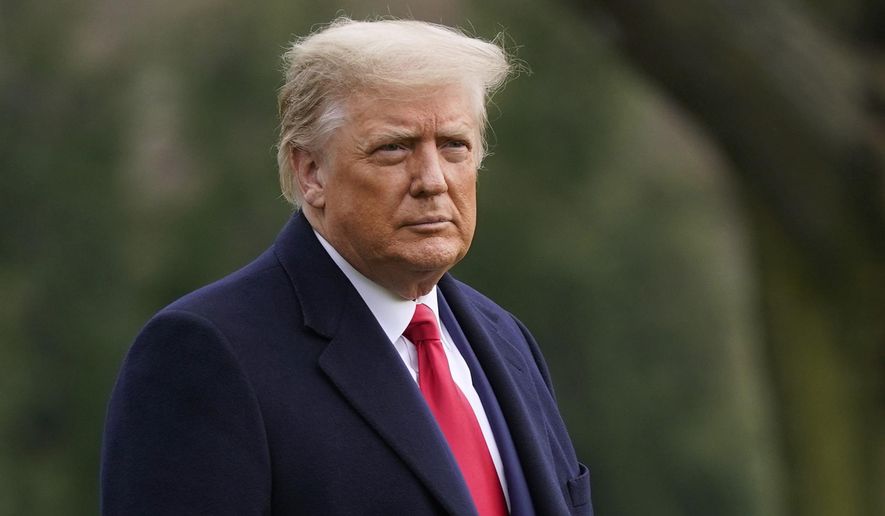OPINION:
President Trump thinks we should stop paying for ugly government buildings.
On Dec. 21, he announced the formation of a President’s Council on Improving Federal Civic Architecture. He wants more of the kind of buildings that tourists flock to see and fewer that resemble Soviet-style “brutalist” designs.
In 2007, my wife and I were in Warsaw, Poland, for a World Congress of Families conference. During our cab ride from the airport, we saw miles and miles of ugly modernist architecture foisted on the Polish people by their communist masters.
It was only when we walked into the restored Old Town area that we saw the beauty of the old city before it was devastated by the Nazis and the Soviets during World War II. Anything built after the fall of the Iron Curtain was unspeakably ugly.
In our nation’s capital, you see a similar phenomenon, with buildings of Jeffersonian elegance contrasted with big, nondescript boxes occupied by thousands of bureaucrats.
“In Washington, D.C., federal architecture has become a discordant mixture of classical and modernist designs,” Mr. Trump’s order said, noting that many government buildings have “a massive and blocklike appearance with a rigid geometric style and large-scale use of exposed poured concrete.”
It’s the kind of stuff that delights modernist critics. These people have held sway since the refugees from the modernist Bauhaus school of design fled Nazi Germany in 1934 and came to America to wreak havoc on our art and architecture.
Hostile to the concept of God-created beauty and representational art, these ingrates soon transformed art and architecture into man-made abominations. As author Tom Wolfe wrote in “The Painted Word” and “From Bauhaus to Our House,” the trend toward ugly was part of a worldview that saw beauty as an insidious part of a class-based social order.
In order to achieve equality, everything had to be leveled and replaced with the gray, lifeless forms of a totalitarian society. This meant suppressing beauty and elevating whatever did not remind people of nature’s wonders. Hence, the rise of hideous sculptures, inscrutable canvases and buildings that resemble socialist German worker housing.
Until the rise of modernism, artists strived for beauty and architects for a blend of beauty and function. Many artworks have challenging and even dark themes, such as war. But until the modernist era, they were at least representational. Unlike abstract imagery, they didn’t require critics to interpret them for an unenthused public.
Ugly art paid for by gullible private collectors is regrettable enough. Bad public art and architecture, financed by taxpayers, is indefensible.
In 1981, the federal government installed a monstrosity called “Tilted Arc” in front of the Jacob B. Javits Federal Building in Manhattan. Designed by Richard Serra, the 120-foot-long, 12-foot-high steel wall dominated the plaza. The federal employees hated it, with 1,300 signing a petition to have it removed, which finally happened at a cost of $50,000 in 1989.
Cut up into pieces, the wall’s remains are stored in a Maryland warehouse. They must be treated every few years at taxpayer expense to prevent rusting, according to the late Bruce Cole, former chairman of the National Endowment for the Humanities.
So, this boondoggle of “rusting, worthless hulks” is still costing taxpayers thousands of dollars, wrote Mr. Cole, who related many more examples of waste and bad art in his 2018 book, “Art from the Swamp.”
As our culture continues its downward trajectory toward decadence and anti-Americanism, examples abound of the art world’s embrace of ugliness to match the ugly architecture.
At the Smithsonian American Art Museum, a large-scale masterpiece, Thomas Moran’s “Grand Canyon of the Yellowstone” (1872) is juxtaposed with a 2004 painting, “Manifest Destiny,” by Alexis Rockman. Moran grandly depicts the park’s famed waterfall amid wild cloud formations. The Rockman canvas, by contrast, shows a horrifying, orange-tinted apocalyptic Brooklyn waterfront swamped because of global warming.
“Placing the bleak, futuristic Rockman next to the Romantic Moran emphasizes not just the dream and failed promise of the American project, now in disarray and disparaged around the globe but also the persistence of grand-manner painting,” writes Washington Post art critic Philip Kennicott. His article, “Reimagining America’s Epic Narrative,” calls it a “dialogue among equal interlocutors.” I think it’s just another slap at America.
As if to show that New York is always a step ahead of D.C., Mr. Kennicott notes that the Metropolitan Museum of Art in December 2019 featured a diptych (two paintings side by side) by Canadian artist Ken Monkman featuring “the artist’s alter ego, a cross-dressing figure called Miss Chief Eagle Testickle.” Mr. Kennicott helpfully points out that the name is “a play on ‘mischief egotistical.’”
In any case, the intent here is pretty clear, because the Monkman work is reminiscent of the 1851 Emanuel Leutze painting of “Washington Crossing the Delaware.”
In Monkman’s version, the Chief is “depicted in the same heroic pose as Washington, but wearing high heels, lipstick and not much else.” Someone at the Met thought this was great art.
President Trump is manfully attempting to turn the tide in ugly government architecture. The new council is to submit recommendations to the General Services Administration by Sept. 30, 2021.
It would be nice if Mr. Trump also gets the chance to nudge government-sponsored museums back toward a preference for beauty and uplifting themes.
• Robert Knight is a contributor to The Washington Times. His website is roberthknight.com.




Please read our comment policy before commenting.